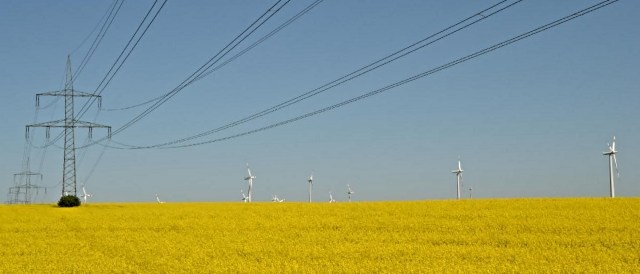Much of the success of the German energy transition depends on the support of the country’s 16 federal states. A new study shows which German federal states are leading and which are slowing down the development of renewable energy. Komila Nabiyeva summarizes the findings.

Vast plains, lots of wind – Mecklenburg-Western Pomerania has good conditions for renewables. But it also made the right political choices. (Photo by Thomas Kohler, CC BY-SA 2.0)
Germany’s rapid shift to clean energy has been largely determined by federal policy. Yet the actual deployment of renewable energy depends on the efforts and policies of the country’s federal states.
In 2014, Bavaria, Baden-Württemberg, and Mecklenburg-Western Pomerania were front-runners in policy, research, and development in the renewable energy sector, according to a new study released on 26 November. The analysis, commissioned by the Renewable Energies Agency (AEE), was jointly prepared by the German Institute for Economic Research (DIW) and the Center for Solar Energy and Hydrogen Research Baden-Württemberg (ZSW).
The study compared the progress in clean energy deployment among all 16 German federal states, and analysed 60 indicators in four categories, including the adoption of energy policies, research and technology advances, and political efforts to expand renewable energy on the federal state level.
The southern Free State of Bavaria took the lead, showing the most impressive progress in the expansion of renewable energy (with four nuclear plants still in operation, Bavaria also remains Germany’s atomic energy hub). Its neighbor Baden-Württemberg can boast the most favorable energy and climate policy frameworks in Germany. The northern state of Mecklenburg-Western Pomerania, meanwhile, has been leading in technological and economic structural change. Berlin, North Rhine-Westphalia, and Saarland are at the bottom of the 2014 ranking.
The performance of the federal states in each category varies. Thus Bavaria, the overall leader, is only in the middle of the list when it comes to political efforts to deploy renewable energy. In October of this year the Bavarian state government adopted a controversial law requiring the minimum distance between wind turbines and residential housing be ten times the turbine’s total height – effectively ruling out new wind turbines in the densely populated state, according to critics.
“Bavaria has been leading not because but in spite of the federal state government, which over years tried to slow down the renewable energy development politically through the Bundesrat”, former member of the German Parliament and President of the Energy Watch Group Hans-Josef Fell said. “This huge success in renewables is a result of hundreds of initiatives by the Bavarian citizens, private investors, farmers and energy communities.” A member of the Green Party, Fell leads the recently organized Pro-Wind Energy initiative, which has taken legal action against the newly adopted law governing wind turbines in Bavaria.
The study of the federal states’ progress in the Energiewende was based on official statistics and interviews with state ministries and trade associations, and is the fourth of its kind. Previous analyses released in 2008, 2010, and 2012 shed light on the progress made by each federal state over the last six years.
Since 2008, Mecklenburg-Western Pomerania has continuously increased its score, and entered the top three in 2014, whereas Brandenburg and Schleswig-Holstein have fallen back since 2012. Lower Saxony and Bremen accelerated their technological advances and lead this category in 2014. Berlin ranks last in the overall list for the third time, but still shows good results when it comes to the number of private users of eco-electricity.
The authors of the study said that all federal states could learn from the best practices of others and improve their performance in different categories. For that the federal state governments should set ambitious renewable energy targets, advocate for more system integration of wind and solar power, and support research in renewable energy.
“Even federal states that are far ahead with their successes in the renewable energy sector should not slacken their efforts. Our analysis proves a great potential for increasing the use of renewable energy in all regions of Germany. This applies to all technologies, be it wind, solar or biomass,” AEE Director Philipp Vohrer said.
Komila Nabiyeva reports on climate change, energy, and development issues in Eastern Europe and Central Asia. This article was first published on the Going Renewable blog.